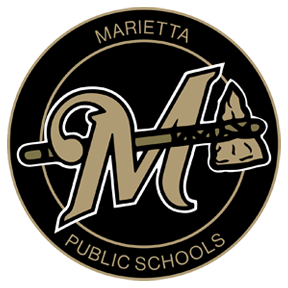Every year millions of children are affected by head lice, which attach to hair and feed on human blood.
Although it is possible to get head lice at any time of the year, there’s often a spike in cases during the fall, particularly when cooler temperatures require kids to wear jackets and hats.
Anyone, regardless of how clean their home is, or how meticulous their personal hygiene, can get head lice. Lice are opportunistic, and don’t care how clean you are – they’re just looking for a warm-blooded human host.
“There’s no shame in getting head lice,” said Jennifer Hicks, MSN, APRN-FNP, of the Love County Health Department, “but it’s not good to keep them. Parents need to be active in getting rid of them. A lot of times, parents will treat one child’s head and don’t treat the home or other children in it, or they don’t treat the child again in two weeks – because it takes that long for the eggs to hatch. It takes some time and effort to get rid of head lice.”
Head lice are tan or grayish-white, about the size of a sesame seed, and attach themselves to the scalp where they lay eggs in the hair. Nits, or the eggs of the lice, are easier to spot. They look like dandruff, but while dandruff is easy to remove, nits will stay firmly attached to the hair.
The most common way to get head lice is direct contact with someone who has head lice. Children who spend a lot of time together in close quarters, such as playing, during sports activities, or at daycare or school are at the highest risk for spread. Head lice can also be spread by sharing clothing or belongings.
Schools fight a consistent battle with head lice – either to prevent it or prevent the spread. When it comes to prevention, in both primary and elementary schools, teachers watch for lice, doing random preventative head checks.
“We don't allow students to share hats or hoodies,” said Marietta Elementary Principal Dana McMillin. “Also, we also try to have students keep their coats in their backpacks, when they’re not wearing them.”
Parents should talk to their children, encouraging them to avoid head-to-head contact with other kids and not to share clothing, hats, scarves, helmets, combs and brushes, hair ties, and headphones with others.
McMillin also asks that parents pay attention if their child starts scratching their head or saying that it itches. As is often the case, prevention is much easier than a cure. Once your child has head lice, getting rid of it – as Hicks said – isn’t easy or convenient.
Students with live lice can’t stay at school. The chance it will spread to others is simply too great.
“When we find live lice, we send the child home,” explained McMillin. “At that point, we usually do a routine check of everyone in the class to see if anyone else is infected. The student can return when they get an ‘all clear’ check up from the health department, a physician, or our nurse.”
In order to get rid of head lice, the treatment process is broad spectrum.
“There are several products on the market to treat the infestation. Treat your child’s hair and comb it out well with a fine-toothed comb,” said Hicks. “You have to get out all the nits. There’s a three-week cycle and if you don’t get all the nits, they’ll hatch, and you’ll be right back in the same place again. And you have to treat the home and any other children who might have it. Everything has to be treated”
Clean items that have been in contact with the head of a person with lice in the 48 hours before treatment. Machine wash and dry clothing, bed linens, and other items using hot water (130°F) and a high heat drying cycle. Clothing and items that are not washable can be dry-cleaned or sealed in a plastic bag and stored for two weeks.
Disinfect combs and brushes used by a person with head lice by soaking them in hot water (at least 130°F) for 5 to 10 minutes. Do not lie on beds, couches, pillows, carpets, or stuffed animals that have recently been in contact with a person with head lice.
Vacuum the floor and furniture, particularly where the person with lice sat or laid. Head lice survive less than one or two days if they fall off the scalp and cannot feed.
Parents who discover that their children have head lice should notify the school and the parents of any playmates.
After treatment, pay close attention for at least three weeks. If head lice reappear, retreatment is necessary. If that happens, you might want to contact your child’s healthcare provider for advice.
Schools, like homes have procedures they must follow to prevent the spread of head lice.
“In classrooms where we know a student with lice has been present, we have treatment protocols that we follow to prevent the spread,” said Marietta Primary Principal Ann Rutledge.
The cost for treatment may be prohibitive.
“We have some information and treatment kits that we can give to parents of students who are found to have nits or live lice,” Rutledge said.
Additionally Hicks said that for students who on SoonerCare, there is a new product, Natroba is available by prescription only.
“A lot of times, treating for head lice may be a financial burden,” Hicks said. “You get a letter from school, and you have to get treatment for everybody and everything in the house. It’s a headache and it costs a lot and takes a lot of time to do it right. Families with SoonerCare can make an appointment with the health department and we can call that prescription in for them. SoonerCare covers that treatment.”
